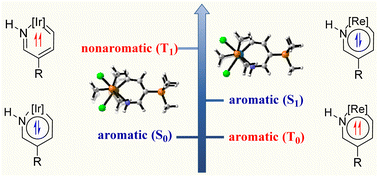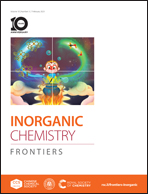Probing the mechanism of adaptive aromaticity in metallapyridiniums†
Abstract
In general, compounds exhibit one-state aromaticity in either their ground or excited state according to Hückel's and Baird's rules. Thus, species with two-state aromaticity in their lowest singlet and triplet states (termed adaptive aromaticity) are rare. Understanding the underlying mechanism for achieving adaptive aromaticity is important to enrich this rare family. Here we carry out density functional theory (DFT) calculations to probe the origin of adaptive aromaticity in metallapyridiniums. Specifically, rhenapyridiniums and osmapyridiniums both exhibit adaptive aromaticity whereas iridapyridiniums do not. Further analysis reveals that the strength of metal–carbon and metal–nitrogen bonds in metallapyridiniums is the key factor to achieve aromaticity in their lowest triplet state. Blocking the spin delocalization in the six-membered ring of metallapyridiniums also helps the persistence of aromaticity in their lowest triplet state. The ligand effects on the adaptive aromaticity in metallapyridiniums are also examined. Our findings not only expand the scope of the concept of adaptive aromaticity but also provide an explicit strategy for achieving adaptive aromaticity in metallapyridiniums.



 Please wait while we load your content...
Please wait while we load your content...